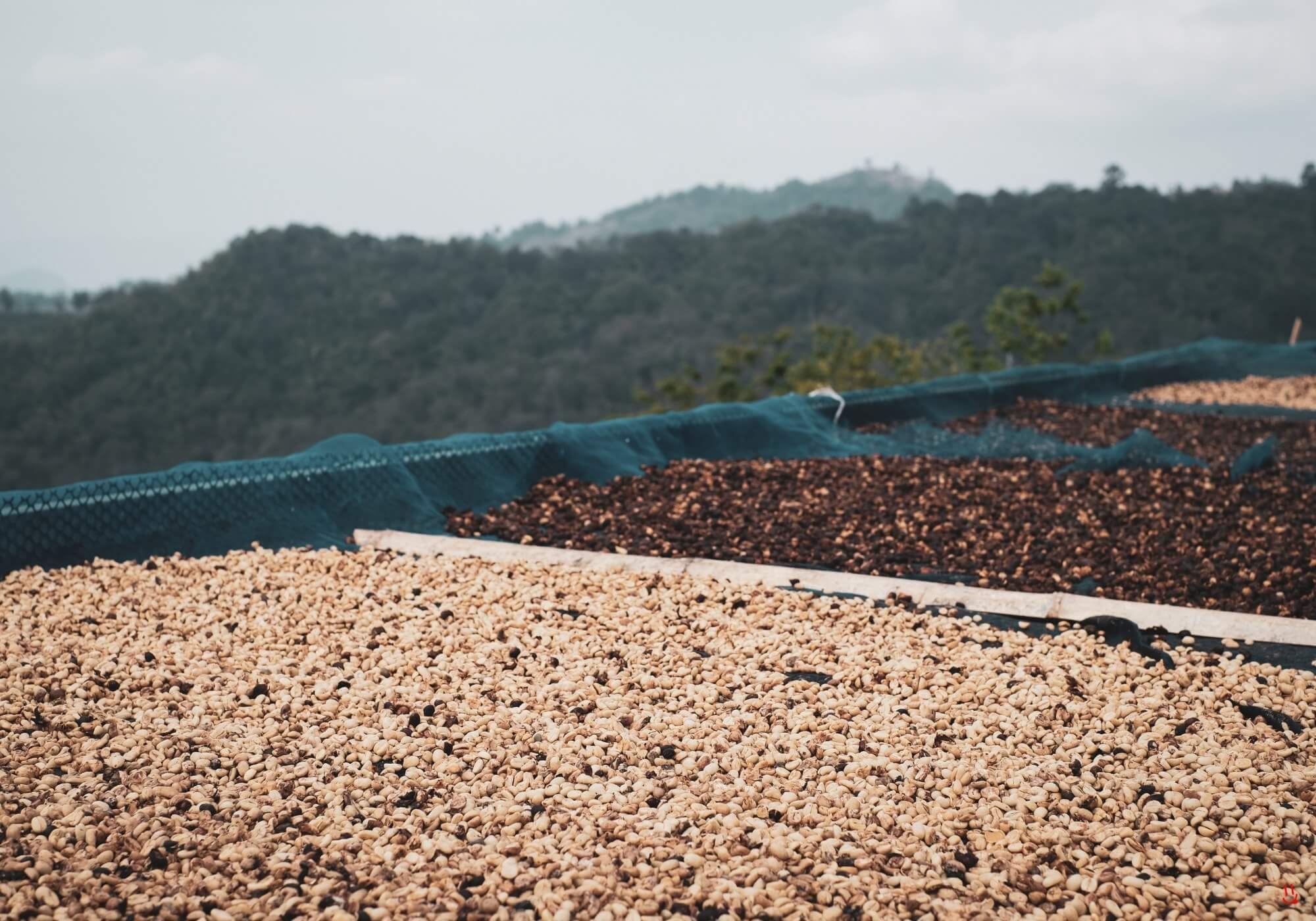What “Natural” Actually Means
In natural (dry) processing, whole cherries are dried with the fruit still intact. As they slowly lose moisture, sugars and organic acids in the pulp influence the seed. When sorting and drying are dialed, you get fruit-forward, sweet, textured cups without rough, fermenty noise.
Core Steps
- Selective picking: focus on ripe, dense cherries; underripes/over-ripes removed.
- Pre-sorting: flotation or manual sorting to reduce defects early.
- Drying whole cherry: thin layers on raised beds or patios; turned frequently.
- Monitoring: protect from rain, dust, and overheating; slow, even moisture loss.
- Rest & mill: once ~10–12% moisture, hulled and rested before export.
How It Tends to Taste
- Fruit: berries, stone fruit, tropicals, red wine tones.
- Body: fuller, rounder mouthfeel than most washed lots.
- Sweetness: jammy, syrupy, dessert-like when executed cleanly.
- Risk: if mishandled, can drift into ferment, funk, or earthiness.
Brew Tips for Natural Coffees
- Filter / Pour-over: start 1:15–1:16; consider a touch coarser to keep clarity.
- Immersion: French press / cupping-style methods suit their weight and sweetness.
- Espresso: naturals can be lush, but dose/tune to avoid cloying cups.
- Water: similar band (70–120 ppm) — too soft can make them feel flat or boozy.
Quick Facts
Natural at a Glance
Fruit-forward
Heavier body
Higher risk, high reward
- Hallmark: ripe fruit, sweetness, weight.
- Seen in: Ethiopia, Brazil, parts of Central America & beyond.
- Needs: strict picking, clean beds, airflow, patience.
Compare Methods
Natural: dried in cherry — bold, fruity, textural.
Honey / Pulped Natural: some mucilage on — middle ground in clarity & sweetness.
Washed: fruit removed before drying — reference for clarity and terroir.
Use Cases We Love
- Single-origin features with story & sensory contrast.
- Dessert pairings, signature drinks, cold brew.
- Blends needing fruit and weight (labeled transparently).
